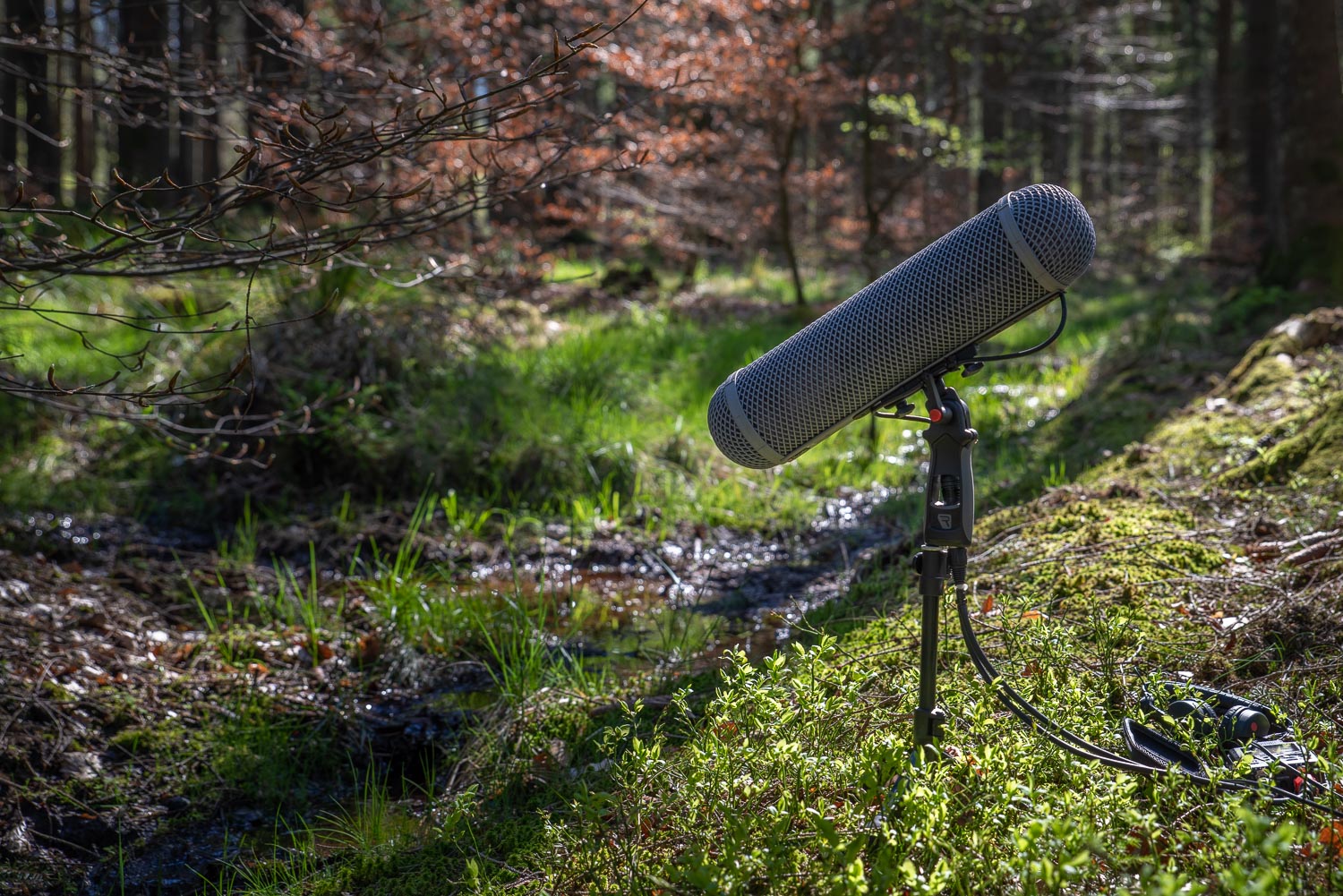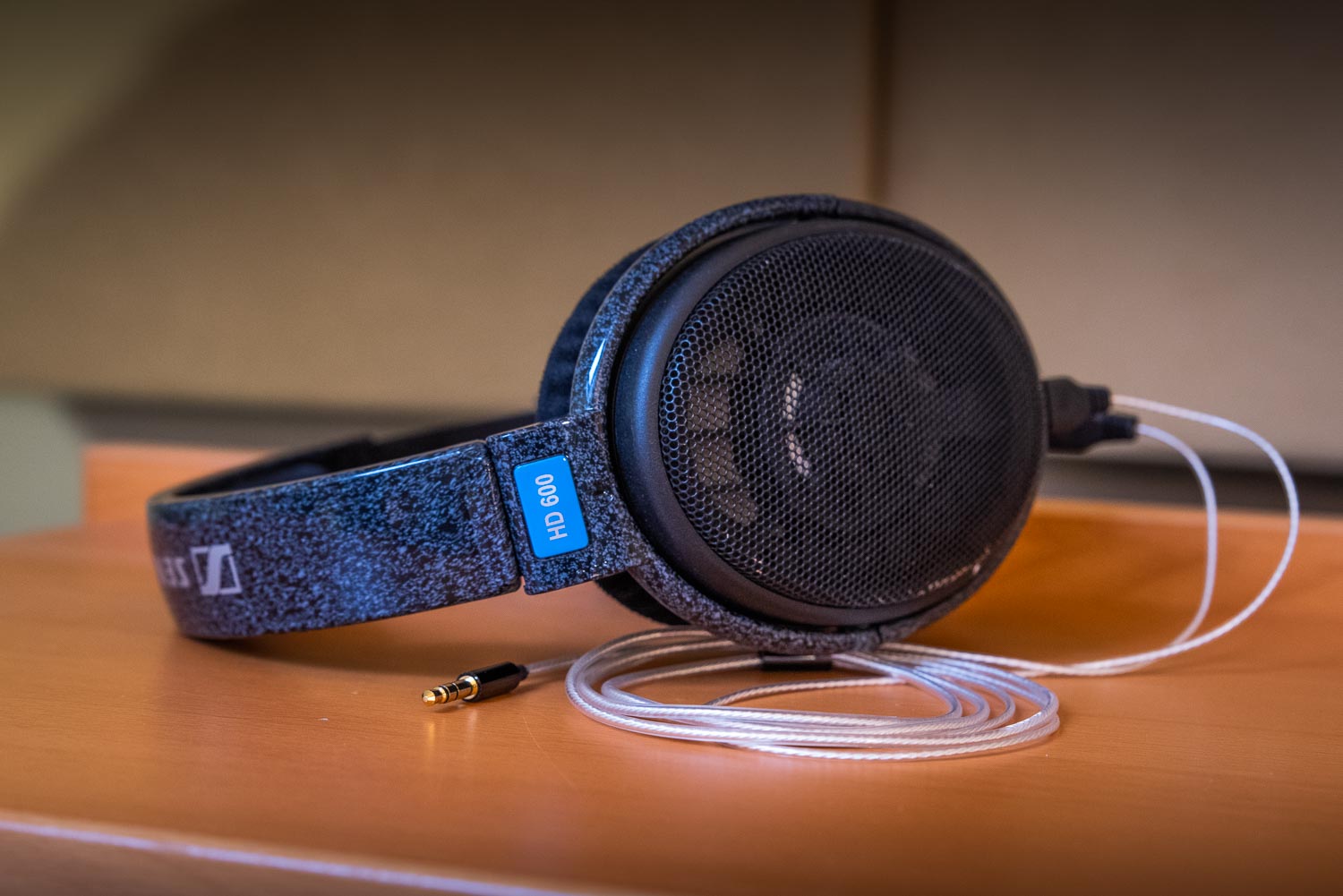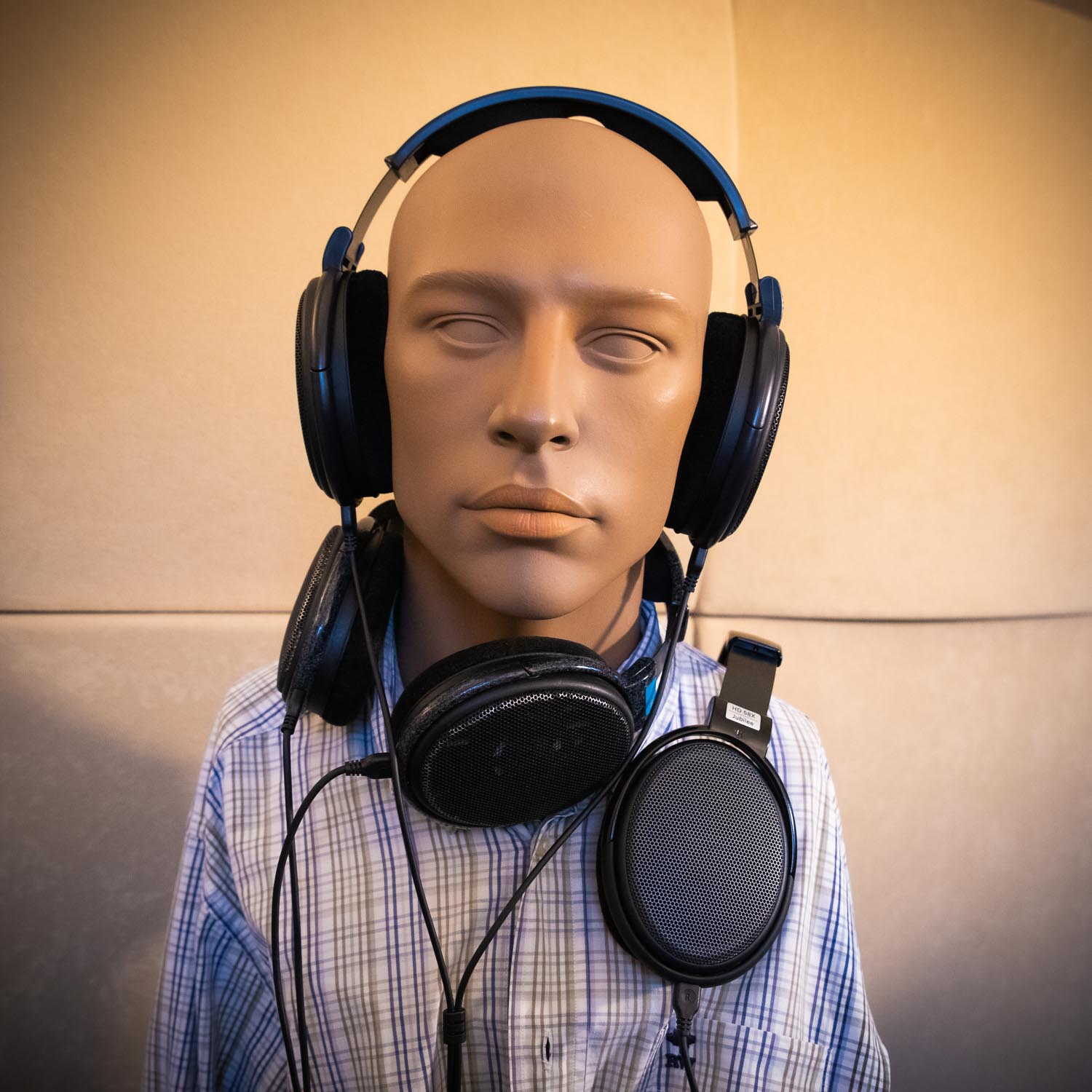 Donate
Donate
 Log In
Distant Thunder Japanese Garden Stormy Weather Irish Coast The Pilgrim Rain on a Tent Medieval Library Fireplace
Sign Up
RSS Feed
Mastodon
Log In
Distant Thunder Japanese Garden Stormy Weather Irish Coast The Pilgrim Rain on a Tent Medieval Library Fireplace
Sign Up
RSS Feed
Mastodon

 Great efforts are spent in delivering a high sound quality on myNoise: quality microphones, transparent audio recorders and crafted sound design are key ingredients to this sonic recipe. Still, you won't enjoy these, if you are using poor speakers or cheap headphones to listen to myNoise. So, if you are a fan of this project, please do me a favor, consider investing in a pair of excellent headphones!
Great efforts are spent in delivering a high sound quality on myNoise: quality microphones, transparent audio recorders and crafted sound design are key ingredients to this sonic recipe. Still, you won't enjoy these, if you are using poor speakers or cheap headphones to listen to myNoise. So, if you are a fan of this project, please do me a favor, consider investing in a pair of excellent headphones!
So far, I could only recommend my favorites, the Sennheiser HD 600 available around $300. That is an investment, but one that will last for decades. My HD 600 are 10 years-old now, and it still work great while being intensively used several hours per day, every day.
Recently, I've been introduced to variants of the HD 600, made by Sennheiser for wholesaler Drop. Drop is an internet business that buys large shipments directly from suppliers, and offer them at reduced prices. The Drop variants of the HD 600 are called the HD 58X and HD 6XX, and priced $150 and $200 respectively. So, how do they compare to my original HD 600? This page will tell you.
I haven't been paid to write this review, and won't even earn money if you ever buy headphones from Drop. The idea behind this test is to recommend you headphones that would make justice to the sound of myNoise, with no sonic compromise. For the sake of clarity, Drop kindly sent these headphones over to me free when asked if I could test their variants. But that's it. This page is an honest review as you will find out.
 The question to answer first, is why headphones? Because myNoise IS optimized for headphones. All sounds are recorded and mixed with headphones use in mind. Sometimes, I record sounds with microphones held in headphone position to achieve the highest realism over headphones (see picture).
The question to answer first, is why headphones? Because myNoise IS optimized for headphones. All sounds are recorded and mixed with headphones use in mind. Sometimes, I record sounds with microphones held in headphone position to achieve the highest realism over headphones (see picture).
When myNoise started, the idea was to offer pleasant noises to mask environmental sounds you don't want to hear. Since, the website drifted away into meditational and musical territories, yet the essence is the same: providing you with a sonic bubble that isolates you from the external world. Therefore, headphones are the best, because even before a sound has started playing, headphones will already isolate you from the external world, on their own. I also like being efficient. Locating the speakers closer to your ears - such as with headphones - allows to listen at quieter levels without polluting your own environment by playing sounds loudly in a room. Because everyone around you won't always agree with your sonic choices...
Another reason I emphasise the importance headphones, is related to a technical issue. As an audio engineer, your work is different - and the techniques you are using too - if the final media is meant to be listened through speakers or headphones. You can make a recording sound good on both, but it you want to make it sound excellent, you will have to take into account how your sounds will be played back. Through headphones, each ear receives its own signal, without cross-talk. With speakers, both speakers signals will blend in each ear. Headphones allow the engineer to use spatialisation tricks that are impressive in terms of realism, the so called binaural cues. This will be harder to achieve on speakers. Worse, binaural cues will actually degrade the signal when listened through speakers. So, this is why I make a choice from the start decided myNoise should be optimized for headphones use.
 I've been through a couple of reference headphones through my sound design carrer. I started with BeyerDynamics DT-531 and then moved to the Sennheiser HD 600 about 10 years ago. As a sound designer in the late 90s, I was already wearing headphones almost all day long, sometimes forgetting wearing them when moving away from my desk. As a result, I no longer counted the broken cables and ripped connectors with my DT-531. When I got tired fixing the cables - and the cables becoming shorter and shorter with time - I started investigating for a new pair of reference headphones.
I've been through a couple of reference headphones through my sound design carrer. I started with BeyerDynamics DT-531 and then moved to the Sennheiser HD 600 about 10 years ago. As a sound designer in the late 90s, I was already wearing headphones almost all day long, sometimes forgetting wearing them when moving away from my desk. As a result, I no longer counted the broken cables and ripped connectors with my DT-531. When I got tired fixing the cables - and the cables becoming shorter and shorter with time - I started investigating for a new pair of reference headphones.
I opted for the HD 600, because of its detachable cord, and that you could order the cord or any other part, easily. This model has been around for decades, and other Sennheiser models are built from the same parts too. You can replace or even upgrade parts at reasonable costs, and they are easy to find. My HD 600 for example, is now fitted with a shorter and more flexible cable than the original (see picture), which best accommodates my working environment. But above all, the HD 600 is a well-established reference among sound engineers. It sounds neutral - you hear the sonic material without additional colorings - and... it is open-back!
Now frankly, the HD 600 is ugly - I never liked its faux granite blue plastic design - and it's big! But at the end, it's the sound that matters to me, and comfort. With the HD 600, the sound is exceptional, and comfort is great, though at no point you will forget you are wearing headphones.
 Headphones come in different flavors, open, closed and semi-open - a compromise between open and closed.
Headphones come in different flavors, open, closed and semi-open - a compromise between open and closed.
Closed-back headphones provide a tight seal around your ears; their drivers are enclosed in a hermetic shell that block external sounds from spilling in your ears. If you are listening to myNoise in a noisy environment, these closed headphones are the first choice that comes in mind. But I don't like them for two reasons. First, it is harder to find closed headphones that sound excellent, and second, because they trap your ears in a hermetic shell, they feel unnatural. Picture yourself confined in a small, over-heated room, and then imagine you open window, realize it fresh and windy outside, and take a deep breath. That's how it feels to me, when I move from closed to open headphones.
Open headphones are designed to pass external sounds through their ear-cups. They feel breathy. But they won't attenuate environmental noises, or very little. I like that, because I can still hear a colleague speaking to me when there is no sound playing in my headphones. And if I need to isolate myself from my surroundings, I then use myNoise. I can wear open headphones four hours, not closed ones.
 Build by Sennheiser for Drop, the HD 58X is the equivalent of the HD-580 Precision, the peak of Sennheiser audiophile headphones for 25 years, before it was replaced by my beloved HD 600. The HD 6XX - also made by Sennheiser - is equivalent to their HD-650, a current model superior to the HD 600. I never tested the HD-650, so it is the first time that I have a chance to hear something that supposedly sounds better than my HD 600!
Build by Sennheiser for Drop, the HD 58X is the equivalent of the HD-580 Precision, the peak of Sennheiser audiophile headphones for 25 years, before it was replaced by my beloved HD 600. The HD 6XX - also made by Sennheiser - is equivalent to their HD-650, a current model superior to the HD 600. I never tested the HD-650, so it is the first time that I have a chance to hear something that supposedly sounds better than my HD 600!
Let's go straight to the point. They all sound awesome, the HD 600, 58X and 6XX! Actually, I cannot hear any difference, honestly.
There are two problems inherent to headphones comparisons. First, it is impossible to A/B test headphones at a flick of a switch. You always have to take one off your head and put the other back on. This process on its own produces a 2-second gap that makes instant comparisons impossible. So, when differences are subtle, the gap makes it very hard to compare. When a headphone is effectively only marginally better than another, there is a no-man's-land where it is almost impossible to tell which one is better than the other, under such practical test conditions. And then, so many factors come to play. For example, even the same headphones will slightly sound different each time you put them on your head, because you ever position them exactly the same.
In this no-man's-land, psychology plays an important role too! Few audiophiles admit, but the expectation bias in sound is real. I know for having taken advantage of this effect to fool others during little experiments, and because I've been fooled myself too! It is very disturbing to find out that the equalizer you used to polish a soundtrack couple of days before, was actually bypassed in your rack. Still you swear you heard the high-end increasing as you turned that treble knob up! So, in our case, knowing that the 6XX is more expensive and supposed to be an upgrade of the 58X, will probably make the 6XX sound better anyway. How better, not that much, just an "impression"... but one that will be hard to dismiss. Since all our contenders sound so close to each other, we have to accept that expectation bias is likely to happen in our case.
So, if you trust my sound engineer ears at this point, you can buy any of the HDs. They all sound that close that any subtle difference in sound, may just be explained by your own expectations on how they should sound. Now, if you don't trust me, that fine. But you will have to trust Mike then.
 Mike is my custom binaural microphone, a torso fitted with high quality microphones in each ear. I named Mike after a good friend of mine, and because mike is the audio engineer jargon for microphone. He helps to record binaural sounds for myNoise, and keeps the studio well guarded: when Mike is not working, he is standing next to the window, gazing at the street several floors below. It is a frightening experience to walk past the house at night, and to come across Mike gazing at you! For this review, I asked Mike to listen to white noise through all the different headphones. White noise has a flat frequency response, and so must be the response produced by Mike if the headphones are flat. Honestly, Mike's hearing is not perfect. Calibrated torsos cost a fortune. Mike is a custom project of mine, fitted with excellent capsules, but not perfect. So, the frequency graphs Mike will produce may be a little skewed, but will consistently be, across all headphones. This will give us a solid base for comparison.
Mike is my custom binaural microphone, a torso fitted with high quality microphones in each ear. I named Mike after a good friend of mine, and because mike is the audio engineer jargon for microphone. He helps to record binaural sounds for myNoise, and keeps the studio well guarded: when Mike is not working, he is standing next to the window, gazing at the street several floors below. It is a frightening experience to walk past the house at night, and to come across Mike gazing at you! For this review, I asked Mike to listen to white noise through all the different headphones. White noise has a flat frequency response, and so must be the response produced by Mike if the headphones are flat. Honestly, Mike's hearing is not perfect. Calibrated torsos cost a fortune. Mike is a custom project of mine, fitted with excellent capsules, but not perfect. So, the frequency graphs Mike will produce may be a little skewed, but will consistently be, across all headphones. This will give us a solid base for comparison.

The first graph compares my trusted HD 600 and Drop's HD 58X and 6XX, and reveals that all models are flat, from 30Hz to 4kHz. Above 4kHz, they all are probably still flat, but it's harder to measure because Mike's own hearing imperfections, and because the smaller sound wavelength at these frequencies makes the frequency plot dependent to the headphone position. By moving the headphone a fraction of an inch, you will get a different curve. Below 30Hz, you see peaks and dips again. Pay little attention to these. It needs an anechoic room to produce perfect graphs. What you see here, could result from infrasound present in my studio, like a truck passing by in the distance. What this graph tells us, is that all these headphones sound remarkably close to eachother! This confirms my subjective impression. And they are remarquably flat in all the frequencies that really matter. More over later on.
 For those concerned about the little fluctuations in the graph, I made another experiment. Since I own two pairs of HD 600s, I compared my second pair to my reference. I wanted to see how much deviation exists, between two headphones of the same model. As you can see, the deviation between my two HD 600 are in the same league than the variations between all the headphones tested! This again means that - in practice - all these headphones sound very much the same.
For those concerned about the little fluctuations in the graph, I made another experiment. Since I own two pairs of HD 600s, I compared my second pair to my reference. I wanted to see how much deviation exists, between two headphones of the same model. As you can see, the deviation between my two HD 600 are in the same league than the variations between all the headphones tested! This again means that - in practice - all these headphones sound very much the same.
 To my delight, Drop also included a pair of high end Focal Elex in their box. These are high-end audiophile headphones, priced around USD 700. Ouch! So, that's three times more expensive than the HD 6XX. So, how do they compare to my reference, and shall I advise them for listening to myNoise? My first impression is: they are build like a tank, very heavy, but achieving a higher comfort than the HDs. They exert only a little pressure around your ears and feel more transparent, in the sense that - as open headphones - they let the environmental sounds pass through even better than the Sennheisers. When you put the Elex on your head, you will feel their weight definitely - they are heavier than the HDs - but they leave your ears with a very comfortable feeling, without physical nor acoustic pressure. When listening to audio material, they reveal the same neutral acoustic response I enjoy, but with the impression of more detailed high-end. Not something drastic, we are still talking about an impression, but stronger than what expectation bias is likely to be.
To my delight, Drop also included a pair of high end Focal Elex in their box. These are high-end audiophile headphones, priced around USD 700. Ouch! So, that's three times more expensive than the HD 6XX. So, how do they compare to my reference, and shall I advise them for listening to myNoise? My first impression is: they are build like a tank, very heavy, but achieving a higher comfort than the HDs. They exert only a little pressure around your ears and feel more transparent, in the sense that - as open headphones - they let the environmental sounds pass through even better than the Sennheisers. When you put the Elex on your head, you will feel their weight definitely - they are heavier than the HDs - but they leave your ears with a very comfortable feeling, without physical nor acoustic pressure. When listening to audio material, they reveal the same neutral acoustic response I enjoy, but with the impression of more detailed high-end. Not something drastic, we are still talking about an impression, but stronger than what expectation bias is likely to be.
 The graph above shows Mike's findings, with the Elex plotted in red. The red curve closely follows the flock of Sennheisers - that's the neutral frequency response I like - but with a little boost around 10kHz, and confirming the impression I had about the Elex.
The graph above shows Mike's findings, with the Elex plotted in red. The red curve closely follows the flock of Sennheisers - that's the neutral frequency response I like - but with a little boost around 10kHz, and confirming the impression I had about the Elex.
The special frequency response of the Elex, with its little emphasis around 10kHz, calls for an interesting discussion. Should headphones be neutral, or may they offer a signature sound? For the mixing engineer, the answer seems clear: they must be neutral and allow the engineer to hear the sounds as they are. However, engineers have their own personal tastes, and may enjoy a deviation from the neutral curve. For example, if an engineer likes bright mixes, he will probably develop a tendency to emphasise the high-end of his audio productions - forcing his listeners to share the same spectral taste. Then, in such a case, wouldn't it be better for the engineer to opt for non-neutral but brighter headphones? Then, he can listen to sounds the way he likes without imprinting his favorite frequency curve into the mix...
Now, we must put this discussion in perspective with an intrinsic characteristic of the human hearing: our ears are not linear in many ways! For example, our sensitivity to the ultra-low and ultra-high frequencies, increases with volume. The same sound, if presented louder to your ears, will reveal more bass and treble. So, changing levels changes the perceived EQ! Welcome to psychoacoustics. That is why the characteristics of a headphone in the extremes of the spectrum, is not so much of an importance because its perception will change with the level your music will play at. So, what really matters to me, is how headphones sound between those two extremes. All headphones reviewed here, are really flat.
For years, I've been recommending the HD 600 ($300) as the best headphone one can get. Now, I found two alternatives, the HD 58X ($150) and HD 6XX ($200) distributed by Drop. Buy any of these and you will never regret it. Or no, don't buy the original HD 600 anymore, as the two Drops alternative sound as good for a better price!
If you are on a budget, opt for the HD 58X, it's a bargain! With the HD 58X you will discover how myNoise was supposed to sound from the start, at a friendly price. Furthermore, the HD 58X has a lower impedance (150 ohm) compared to the HD 6XX which means that it will work perfectly with underpowered audio devices, like portable players or smartphones.
If you are an audio enthusiast, or a professional, opt for the HD 6XX. Frequency plots cannot reveal all the characteristics of a headphone. The HD 6XX for example, comes with a higher impedence (300 Ohm) which translates into better transients and damping... but only when coupled with a decent headphone amplifier. It only costs $50 than the 58X and comes with a storage case that will keep them safe.
The Focal Elex is special. I would NOT advise the Elex for myNoise. The idea was to suggest headphones that would be true to the sound of myNoise. With the Elex, there is that little added detail in the high-end, which I don't find useful for my sounds. When I need these details, I will equalize my audio accordingly. I don't think you should add sugar, to something that has been carefully sweetened for you already.
But who doesn't like that extra little detail? Like offering you that little more of cream topping on your waffle (I am a Belgian). You are right. On anything other than myNoise - which I am over-critical with - the Elex makes the sound even "better". Listen to music with the Elex, and you will probably find that music lacking a little something when you come back to the HD 600. That is the price to pay with a headphone that claims to be neutral, and the HD 600 definitely is. The Elex makes good recorded music sound even more enjoyable but imperceptibly, so it can still be considered as neutral. I like them. I've been across audiophile headphones that cost a fortune, but still sounded bad... really bad. Not the Elex. Now, USD 700 is a price that is hard to justify. In particular since my copy of the Focal Elex did suffer from a slight imbalance, with the right driver being 2-3dB louder than the left. This is not acceptable for such a high-end product
The Sennheiser HD 600 on Amazon ← Amazon affiliate link
Sennheiser HD 58X available from Drop ← highly recommended!
Sennheiser HD 6XX available from Drop ← will not regret it
Focal Elex available from Drop ← not for the regular myNoise audience